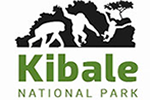Kibale forest received National Park status in 1993. Prior to 1993, it was a Forest Reserve, gazetted in 1932, with the stated goal of providing a sustained production of hardwood timber (Osmaston, 1959). A polycyclic felling cycle of 70 years was initiated, and it was recommended that logging open the canopy by approximately 50% through the harvest of trees over 1.52 m in girth (Kingston, 1967). This history of logging led to varying degrees of disturbance among sites.
Park Management History
Kibale Forest was first gazetted in 1930 as a Crown Forest with the sole objective of timber and charcoal exploitation. Commercial goals remained the management priority until the mid eighties
when conservation objectives were introduced by management of the Kibale Forest Reserve.
Meanwhile, an area between Kibale Forest Reserve and Queen Elizabeth Game Park (QENP) was designated in 1964 as Queen National Park – Kibale Forest Corridor Game Reserve. The function was to protect migration routes for wildlife between these two PAs.
The management of the Corridor was separate from that of the Forest Reserve; while the Forest Reserve was under the management of the Forest Department, the Corridor was under the then Game Department that was responsible for the management of all Game Reserves, Game Sanctuaries and Controlled Hunting Areas.
In areas adjacent to the forest reserve and corridor, high increase in human population, poor farming practices and the breakdown of law and order in the 1970’s and early 1980’s created
intense pressure on the forest. This resulted in the encroachment of the two areas. By 1992, there were approximately 13,000 people living inside the Corridor. In 1992, these people were evicted
and relocated to Kibaale District.
In 1993, the Kibale Forest Reserve was transferred to Uganda National Parks and was amalgamated with the Forest Corridor Game Reserve to form the present Kibale National Park.
The History of People Around Kibale National Park
The human population density around KNP is high (average 173 persons per square km-2014 census), mainly due to past immigration from southern Uganda. The people in the 34 parishes
surrounding KNP include the native Batoro and Bakonjo and; immigrant Bakiga, Banyankole and Bafumbira. These are primarily subsistence farmers who grow crops such as bananas, groundnuts, sweet potatoes and sugar cane.
Land pressure varies around the park. In the north, around the tea estates, land holdings average just one hectare per family, while to the east and south each family uses approximately two
hectares. Tree plantations, primarily eucalyptus, meet timber and fuelwood requirements to some extent. Some livestock rearing occurs in the south but production is very low. Additional economic activities include the brewing of crude waragi, fishing and working in the tea plantations.
In the past, the local communities relied extensively on products obtained within Kibale forest. These included timber, game meat, land for cultivation, medicinal plants, firewood, poles, craft material and wild coffee.
